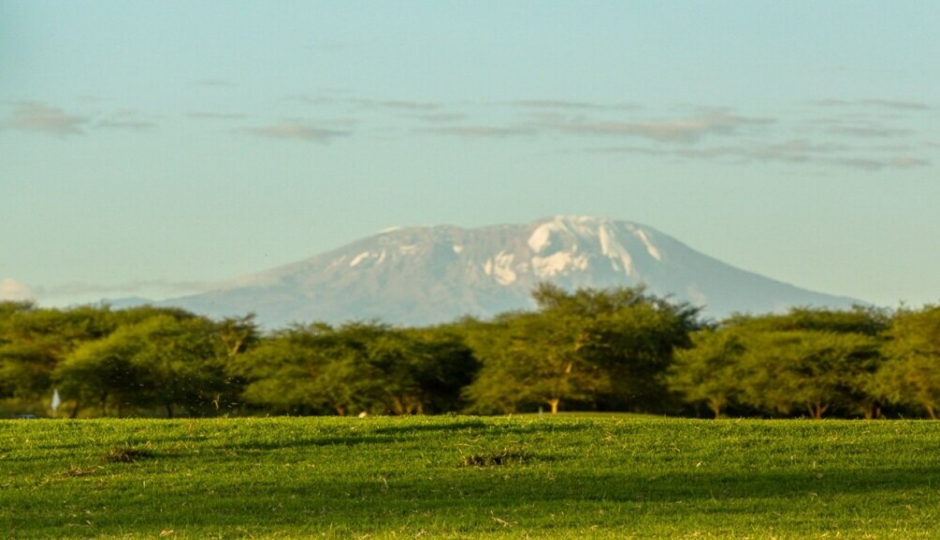
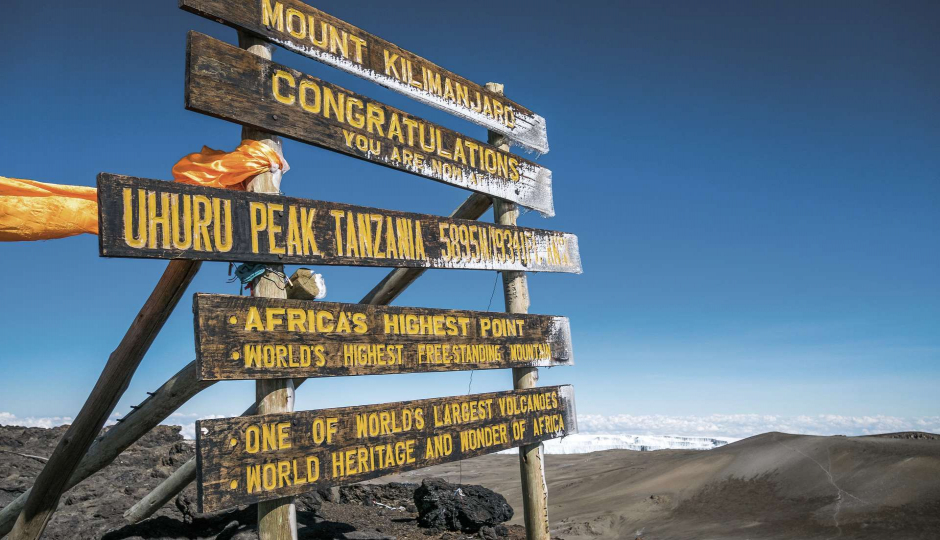
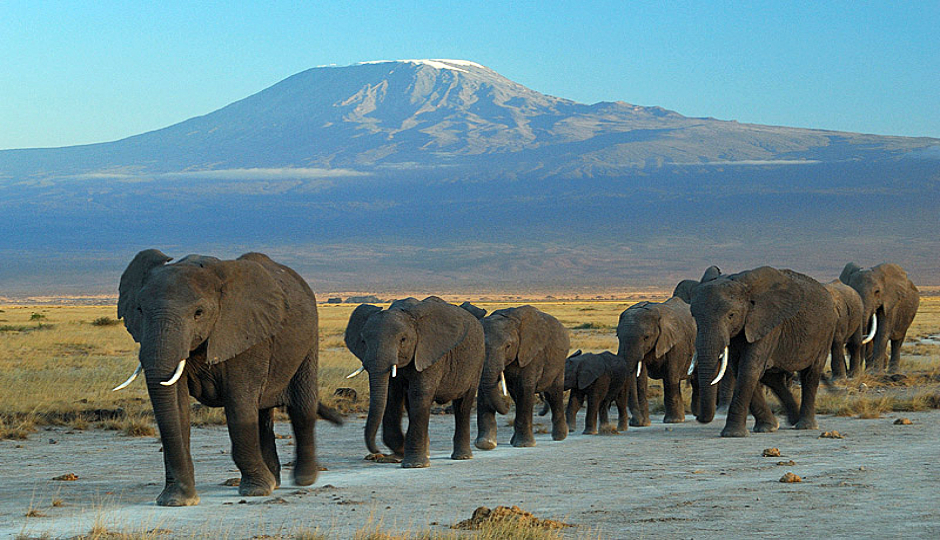
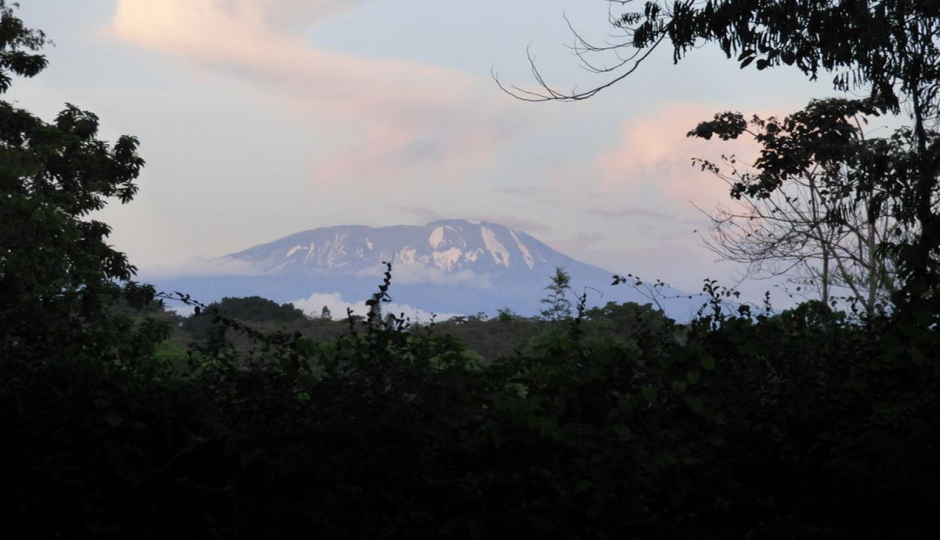




These notes contain important information. We advise you to read them and to have a copy available to you throughout your trip. You should also read our full terms and conditions available on our website. Which overrides the information below in the event of inconsistency. Age limit the lower age limit for climbing Kilimanjaro is 10. There is no upper age limit, but climbers of any age should be satisfied with their health, fitness, and ability. How hard is it? An ascent to the summit of Kilimanjaro is an incredible experience, but although the climb is not technical and requires no special mountaineering knowledge, it is certainly not to be taken lightly. At over 19,340 feet (5895 meters) it is Africa's highest mountain and it is no 'walk in the park. Altitude sickness can prevent even the fit and well-prepared climber from getting to the summit. Having said that, the lack of any requirement for technical mountaineering experience means that anyone has at least the possibility of reaching the summit. Climbers aged over 80 have conquered Kilimanjaro in the past! Personal Fitness
The fitter you are, the better chance you have of reaching the summit, and the more comfortable the climb will be for you. Our success rate is very high (98%), but you should spend the weeks and months before your climb improving your strength and stamina, as both of these are important on the mountain. If you are considering climbing Africa's highest mountain, it probably means that you are already active, perhaps playing sports or incorporating physical activity into your everyday life. If you are not an active person, you need to prepare your- self in advance - and very seriously - for your Kilimanjaro climb. A fit body, flexible joints, toned muscles, and healthy lungs are what you should aim for. If you're not used to long-distance walking, then a few long walks can really help your preparation: if you can walk for two or more consecutive days, then that will help you realize that this is very different from a couple of hours' gentle weekend stroll. It also helps to get you used to the equipment (boots, socks, daypack, etc.) that you are bringing with you. Whether you are already ?t or not, we would recommend starting to prepare yourself 3 or 4 months in advance, concentrating on: be encountered, you follow the advice given below. Building lung efficiency through jogging, running, or cycling·
Building strength, especially in your leg muscles Reducing body fat and generally toning yourself Health and inoculations Although no inoculations are compulsory for a visit to Tanzania, the following jabs are recommended: hepatitis ‘A', typhoid, tetanus, polio, rabies, and meningitis. It is the responsibility of each traveler to ensure that any inoculations they wish to have are up-to-date and we advise people to look at their inoculation records and take the necessary action a few months in advance. Your doctor or travel clinic should be consulted. Note that, for anyone arriving from a yellow-fever area, possession of the appropriate vaccination certificate is compulsory. Stomach problems changing countries often means changing diet and this in itself can be the cause of diarrhea and vomiting. Such symptoms often cause visitors to believe that they have contracted food poisoning, but this is not necessarily the case: the stomach is just getting used to being confronted with different and unfamiliar foods. Within your first aid kit (see below), it is certainly worth bringing your favored treatment against diarrhea to help speed recovery.
If you do encounter stomach problems, then keeping hydrated is a big part of the recovery process. Drink water, and lots of it. Sunburn and eye care Carrying a hat (and wearing it!) and using a high-factor sun tan lotion to protect against harmful rays are both essential on your Kilimanjaro climb. Don't be fooled by photos of the snow-clad mountain peak, as you will cross a number of diverse terrains and experience a range of climatic conditions on your ascent and descent. You need to be prepared for varying temperatures, remembering that you can get sunburn even when the temperature is relatively modest. Sometimes forgotten by visitors is the requirement to protect the back of the neck: bear this in mind when choosing your type of hat. The backs of hands, ears, noses, and lips are other neglected areas, so use that sun tan lotion wisely. A good pair of decent-quality, protective sunglasses is another essential. The glare on the mountain can be powerful and though snow blindness is unlikely on Kilimanjaro, vision can be temporarily affected by the sun if sunglasses are not worn.
Breathing
Breathing: it's something that we do all the time, but we should never take it for granted, especially when we are at altitude. Slow, deep breathing is very important when climbing and it is advisable to get into a rhythm right from the start of your Kilimanjaro climb. Taking in enough oxygen is essential to power us up the mountain. At higher altitudes, the speed of breathing has to be increased. Your mountain guide will advise on this. Correct breathing avoids the build-up of lactic acid and the inevitable cramping that follows. Lack of oxygen can lead to hypoxia, a loss of certain functions, and even hypothermia. Correct, deep breathing needs concentration. It is important to push the stomach out and breathe through the mouth, filling the lungs. (De ate the stomach again when exhaling). Concentrate, too, on raising the diaphragm while inhaling - this too is part of a correct breathing technique. Maintaining your correct breathing - without interruption - is very important, too: holding your breath (perhaps when you are scrambling over rocks and feeling a bit anxious) is not a good idea.
On the night ascent to the summit, it is advisable to cover your mouth and nose with a light bandana. This will avoid breathing in the cold air which can be damaging. First aid kit All of our mountain guides are trained in first-aid and hold appropriate certificates, but we would strongly advise all of our visitors to take a first-aid kit with them. As well as any prescription and anti-malarial drugs that you are already taking, you should pack the following: · Blister plasters. Absolutely essential.
Ordinary plasters and antiseptic cream, for any little cuts and nicks· A couple of bandages, in case of ankle strains, etc. Supports for knees and/or ankles, if you have weaknesses in these joints· Paracetamol/Ibuprofen. You should have these (or other painkillers). Imodium for any stomach problems.· Rehydrating powders, which are valuable in the event of diarrhea.· A good-quality lip salve/chapstick.· A small tub of Vaseline to alleviate cha ng.· Throat lozenges to combat dry air conditions.· Anti-fungal cream for the feet Carrying any liquids or ointments in separate plastic bags is advisable, to prevent leaks.
Hydration taking on sufficient water is always a necessity but becomes even more important in the climactic conditions experienced on Mount Kilimanjaro. Whether you're on the high, dry part of the mountain or in the heat and humidity of the lower slopes, a regular and high fluid intake is essential for both your health and safety. We recommend a daily fluid intake of 4 to 5 liters, most of which should be water. Fruit juices are also recommended, but note that the consumption of excessive coffee on Kilimanjaro is not a good idea. 'Drink before you get thirsty' is a good motto to observe. You should be carrying bottles/containers sufficient to hold at least three liters and water purifier tablets. Note that using (and removing) layers of clothing means that you can easily control your body temperature and thus the amount you sweat, another important way of fluid retention. Purified water.
On the lower slopes, water is available from streams and can be used safely. Our guides will ensure that you have enough water in your bottles or camel pack. If you wish to have your water purifier, you should bring your own tablets and ask your guide, who will be happy to purify the water for you. On the Marangu Route, water and sodas can be purchased, though this is more expensive than the same products purchased elsewhere in Tanzania. Altitude sickness. Also less commonly known as Acute Mountain Sickness ('AMS'), this is commonly misunderstood as being a 'lack of oxygen' experienced at altitude. In fact, AMS is caused by a lack of air pressure at altitude, which means that each breath you take results in an intake of less air - and, of course, oxygen - which is essential to the function of all the body's organs.
Whether or not you understand the causes of AMS or not, the important thing is to recognize the symptoms and realize that AMS can be dangerous and potentially fatal. Happily, although most Kilimanjaro climbers experience a level of discomfort caused by the effects of altitude, for many this will be fairly mild and can be addressed through rest and if necessary, descent. AMS is not a disease or illness, simply the result of the body not adapting quickly enough to the changing conditions produced by the increase in altitude. Given a bit of time, the body can usually adapt and the ascent of the mountain can continue. AMS in its least severe form will show itself as a headache, often a very bad headache but one which can be treated in many cases with a normal headache remedy (so, include these in your first aid kit). If the headache does not diminish, or if the sufferer also experiences vomiting and complete breathlessness during periods of inactivity, this can mean that the AMS has 'progressed' to something more severe, demanding that the sufferer rests until a complete recovery has taken place. (Unfortunately, it is not possible to alter the schedule once you are on the mountain, so if you feel you might want an extra day to acclimatize, then you will have to ask for this at the time you organize your trip.
Additionally, should it be necessary for one of our guests to descend due to AMS, then they will be responsible for any costs of the transfer back to the hotel and extra hotel nights. We cannot refund anything for nights missed on the mountain.) Further symptoms can mean that AMS in its most severe form is being experienced and that immediate descent is required. Symptoms to look out for are a decrease in mental ability, difficulties with staying awake, balance, coordination, or speech. Greatly increased heartbeat, blueness in the face, persistent coughing, or noises in the lungs can also indicate severe AMS. The possibility of suffering from AMS can always be reduced by taking longer over your trek and thus giving the body more time to adapt to the increase in altitude and consequent decrease in air pressure/air intake. You can also help reduce the chances of AMS by walking slowly, keeping hydrated, and eating properly during your climb.
The golden rule with AMS is to immediately keep your mountain guide fully informed of any symptoms experienced, and their development. Travel Insurance All travelers taking trips with us must have valid travel insurance, without exception, and no one will be permitted to join any of our trips until we have had sight of your insurance certificate and taken note of the details. Please ensure that all members of your party are covered by insurance and that it includes medical coverage and adequate coverage for emergency rescue and repatriation. We would also recommend that your policy covers trip cancellation, personal liability, curtailment, and loss of luggage/personal effects.
If your travel insurance has been arranged in conjunction with your credit card provider, we will require proof of purchase of the cover. Please contact your bank/credit card provider for details of the participating insurer, together with the level of cover provided and the emergency (24-hour) contact telephone number. Flying Doctor Insurance Lindo Travel & Tours can arrange 'Flying Doctor Insurance' should you require it. Flying Doctor insurance covers the provision of light aircraft with qualified doctors, able to evacuate patients from remote locations to hospitals. How- ever, this is not a substitute for your travel insurance and is only available in conjunction with that insurance.
If you wish to take out this additional insurance, please let us know. Lindo Travel & Tours will need a copy of your passport, plus full details of your travel insurance company, including your policy number and their 24-hour contact telephone number. Bookings for 'Flying Doctor Insurance' should be made at the time of booking your trip. Hiring equipment At Lindo Travel we have a variety of equipment available for hire, for those who do not want to go to the expense of buying new equipment for what might be a 'once in a lifetime' trip, or for those who simply do not want to bring their own. All prices are given in US$ and the price stated is per person and is for the duration of your climb (not 'per day').
What do I need in my daypack?
Rest assured, your porters will carry all the heavy gear, with the exception of your daypack. Our advice is that a daypack should weigh no more than about 5 to 6 kg and should contain water, rainproof clothing, sunscreen, a camera, and perhaps a snack or two. You should also carry any prescription medication you need during the day.
Clothing
If you don't want to buy or bring all of the following items, they may be available for hire - see the list above - and let us know in advance. Hiking boots good pair of walking boots are essential for a climb such as Kilimanjaro. What is 'good'? First of all, they should be a reputable brand. If you are buying new boots, and are not familiar with the many different types on offer, you should seek specialist advice from an outdoor shop. If you are investing in new boots, you should buy them well before your Kilimanjaro trip and make sure that you wear them before you arrive in Tanzania. Arriving with boots that are not properly worn will result in discomfort, and blisters and could even prevent you from summiting. If you are going to wear boots that you have used before, check that they are still in good condition, that they still have a good grip, and that the laces are not worn. They may also need to be re-waterproofed using a spray, as waterproofing coatings wear off over a period of time. You should bring a spare pair of laces.
Gaiters
A pair of gaiters are very useful in keeping stones, dirt, and - on the summit, snow - out of your boots. We would recommend bringing a pair.
Socks
Most climbers will bring a couple of pairs of thermal socks and some thinner ones as well. Some people like to wear two pairs of socks simultaneously, believing that it helps to prevent blisters. We would recommend experimenting before your climb, to ensure that your boots and socks combination is satisfactory. You should save at least one pair of dry socks for your summit day.
Trekking poles
The choice is to bring two poles, one pole, or none at all. Experience trekkers will know whether poles suit them or not, but we at Lindo Travel strongly recommend them. Many find that telescopic poles are invaluable on the descent, as they can be adjusted to reduce considerably the pressure that is inevitably experienced on the knees. Telescopic poles are also easy to pack.
Hats
To protect against the sun, a hat is a must, preferably one with a brim. A woolly hat is also essential for the higher slopes, to protect against the cold and some people prefer a balaclava which can reduce the effects of the wind and cold on the face.
Rainproof clothing
Waterproof layers are another essential on your Kilimanjaro climb. Getting wet clothes can lead to a great deal of discomfort and loss of body heat, which is dangerous. Gore-Tex is a well-established brand and one you should look for when buying a waterproof jacket. Your jacket should be large enough to go over all the layers you intend to wear when you are doing your ascent: again, this is something you can try out at home. Waterproof trousers are also essential.
Layers
Flexibility is the most important consideration when choosing your clothing. Temperatures vary so much on the mountain and wearing several layers allows you to put on, or remove, a layer or two as it gets colder or hotter. As well as shirts, your packing list should include one warm fleece and one lighter one; thermal underwear (long johns and a vest); trekking trousers (not jeans, which are impractical) and thermal gloves (many climbers like a thinner pair as well - this is effectively an extra 'layer' for the hands). On the lower slopes, a light shirt is a good choice. A bandana is useful for covering the mouth against dust, or to protect against the cold (if you don't have a balaclava).
Excess luggage
If you wish to leave some luggage behind before you go on your safari, you can leave it in storage with Lindo Travel at our office, at no extra charge. This will be of particular benefit to those who are combining their safari with a trip to Zanzibar immediately afterward or a Kilimanjaro climb.
Food
On your climb, we will provide you with breakfast, lunch, and dinner. We pride ourselves on the quality of the food our teams are able to provide while out on the mountain. With years of experience climbing mountains (and years of experience eating, too!), we know which foods make for a balanced, energy-giving diet for those climbing Kilimanjaro. We adhere to the highest possible hygiene standards. On Kilimanjaro, we provide climbers with a special, solar-lit dining tent. For between mealtimes, you may wish to bring a few snacks, such as nuts and dried fruit.
Special Dietary Requirements
With advance notice, we can cater to vegetarian, vegan, dairy-free, and gluten-free diets. If you have any other special dietary requirements, please let us know in advance and we will try to provide them accordingly. Our Mountain Guides. Apart from yourself, the Mountain Guide who accompanies you is the most important person on Kilimanjaro. A good guide will deliver an unforgettable summit climb for all climbers who are fit and able to achieve it; a bad guide can spell discomfort and sometimes disaster. At Lindo Travel & Tours, we employ the best guides in the business and we never compromise on quality. Experience is important and our guides have collectively hiked Kilimanjaro well over one thousand times.
That experience is invaluable, but our guides are also well-trained and knowledgeable, passionate and enthusiastic. Most of our guides have been with us at Lindo Travel for many years. We keep them because they are good and make sure that they are properly rewarded for their efforts and expertise. To become a mountain guide, they must undergo a period of training that covers all aspects of the job, including most importantly mountain safety, how to spot the signs of altitude sickness, and what to do when it is spotted. As well as safety, the guide is also concerned with your comfort and enjoyment while on Kilimanjaro, and to this end, they will pass on tips and inform you about the mountain fora and fauna. We are very proud of the favorable comments that we receive from our visitors about the quality of our mountain guides.
The weather and temperature on Mount Kilimanjaro Weather and temperature vary according to the season in which you decide to climb; and, whichever season you choose, both vary according to the altitude. While it might be 20 C down in the rainforest section of the climb, up in the crater the temperature could be as low as -20 C. Climbers must be prepared for these huge variations, choosing their clothing accordingly (see CLOTHING AND EQUIPMENT) A waterproof should be close to hand at all times and layers of clothing used to maximize flexibility. With a Lindo Travel trek, we always dig latrines or set up toilet tents at the campsites. At times, however, you may have to use the public 'long-drop' facilities. Be prepared: many of the public toilets on the Kilimanjaro routes are no more than basic wooden sheds with no more than a hole in the floor.
They are often smelly and some irresponsible trekkers choose to ignore them and 'do their business' out in the bushes. Such behavior is unacceptable and unethical, as is leaving toilet paper out in the open or hanging it on bushes. To alleviate your discomfort in public toilets, the use of a bandana to minimize the effects of the unpleasant smell is recommended. Thankfully, things are constantly being improved and some camps now have perfectly acceptable facilities. For example, all the huts on the Marangu Route are equipped with English-style toilets, but the toilets at the picnic sites are all of the 'long-drop' types. All the toilets at the campsites and picnic sites on the Machame, Lemosho, and Rongai Routes are ‘long-drop,' and are the responsibility of the park authorities, not Lindo Travel & Tours.
Walking up
Pacing yourself on the way up is essential to increasing your chances of success. Our guides will advise you on this. Remember that walking slowly helps you to acclimatize. It is definitely not a race, walkers are of all different ages and abilities. Walking down.
Once you've reached the summit, it's time to celebrate your great achievement, but you should remember one thing: you still have to get down again and there are some important considerations to bear in mind. Key points are to pay attention to your breathing (see 'Breathing,' above, and to protect your valuable knees and hips on your descent. You should continue to breathe properly, concentrating on your lower diaphragm. The use of your trekking poles is important on your descent, as this reduces the pressure you put on your knees with each step. Bending your knees at every step will also assist in this respect. As well as putting all your body weight on your knees with every step downwards, remember that the descent will force your toes against the front of your boots. If you're careless, this can result in damaged toenails (and the damage can be permanent) and unnecessary blisters. To reduce this problem, re-tie your boots tightly before you begin your descent, ensuring first that your heel is firmly against the back of your boot.
Carrying your gear
You really need to worry only about your daypack and its contents, as our porters carry all the heavy equipment, up and down the mountain. If you need a personal porter, do let us know in advance and we can arrange this (extra charges apply.) What if I can't make it to the top?
We are proud that 98% of Lindo Travel & Tours visitors who undertake a Kilimanjaro ascent do in fact reach the summit. Despite that pride, however, safety always remains our number one priority and our guides are always quick to respond to anyone in difficulties. In the unlikely event that you have to descend early, before reaching the summit, you would be accompanied by a medically trained guide who would escort you down the mountain, in safety, and in the shortest possible time. Visa Requirements
Make sure that you have a valid passport whose expiry date is sufficient for you to be allowed to enter Tanzania. (Usually, the expiry date must be at least six months from the date of travel, for tourists, and longer for business travelers.) With the exception of those traveling from certain African countries (and a few other countries), all visitors to Tanzania must have a valid visa. It is the responsibility of travelers to arrange this. Visas are best arranged in advance. If you are arriving at Kilimanjaro International Airport, without having arranged a visa in advance, please follow the procedure outlined below, to ensure that you get the correct visa and meet up with your driver-guide outside the arrival door:
01. Complete the visa request form (either on the flight or on arrival)
02. Join the queue for one of the visa counters - please don't let yourself be assisted by anybody at the Airport or be persuaded to give your visa money to anyone apart from the staff at the counter
03. Pay for the visa - USD 100 per person for US nationals and USD 50 per person for nationals of other countries (visa fees are payable in cash ONLY and US bills should not be older than 2006)
04. Make sure that you get a receipt for this transaction – the receipt is yellowish- orange color with a silver seal sticker
05. Verify that the number on the receipt is the same as the one written on top of the visa stamp on your passport
06. Queue up for your fingerprints and passport check
07. Collect your luggage and leave by the exit door
08. Outside the exit door, you will see our driver guide holding the Lindo Travel sign board If you are arriving in Kenya, prior to transferring to Tanzania, you should familiarize yourself with any Kenyan visa requirements that may apply and ensure you obtain the necessary visa or transit visa for that country, too.
Useful information regarding visas for Tanzania and Kenya can be found on the Tanzanian Embassy websites in your home country.
Tipping
Tipping is of course discretionary but is an expected part of the way in which business is done in Tanzania. It counts as an expression of gratitude to those who - hopefully - have made your experience an unforgettable one, and enables you to directly reward those people. Our passengers come from all around the world, with different cultural attitudes to tipping, but a tip is of great significance here in Tanzania and will be hugely appreciated by the recipient. In the course of your welcome meeting, you will be advised of the number of guides and the cook who will accompany you on your climb. (The number of porters will only be confirmed once the luggage and equipment have been checked by the national park rangers at the gate.) You will be introduced to your porters during the course of your trek - normally there will be 2 or 3 porters per trekker. We realize that both the process of giving tips and knowing how much to give can be difficult, so we provide the following guidance:
At the end of the climb, it is a good idea to hold a 'tipping celebration' after the last meal on the mountain (this is normally after breakfast on the last day) Tips can be placed in an envelope and given to the lead guide, who can then distribute them to the team. (It is advisable to announce the total amount in front of the group so that all team members are aware of how much is to be distributed.)·As for the amount, most trekkers feel that a tip equivalent to about 10 % of the cost of their trek is appropriate. (So, if your trek cost was US$2500, a tip of US$250 should be about the right amount.) If your group consists of only one or two trekkers, you might want to give a bit more.
An alternative method, which some trekkers prefer, is to give individual tips to the team members, in which case the following amounts can be used for guidance:·Lead guide: between US$10 and US$15 per group, per day on the mountain Assistant guide: between US$8 and US$10 per group, per day on the mountain Cook: between US$7 and US$10 per group, per day on the mountain Porter: between US$5 and US$8 per group, per day on the mountain. The above figures are only for guidance and can of course be varied at the trekker's discretion. Gifts of clothes etc. are also appreciated.




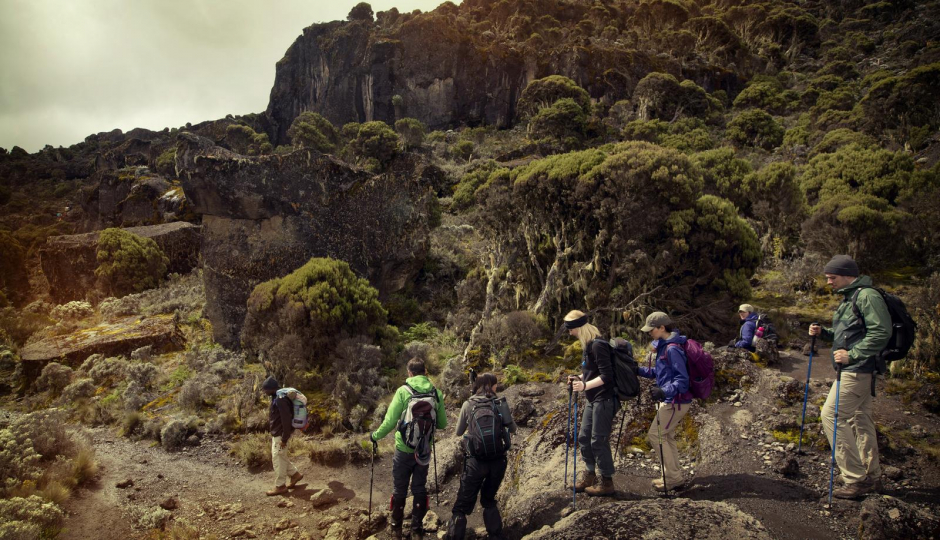
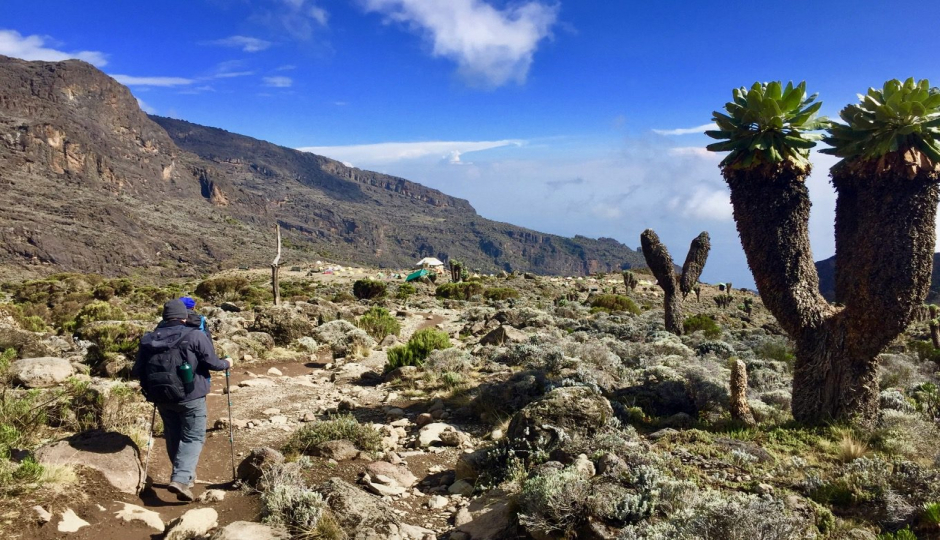
What is a Reasonable Tanzania Safari Itinerary?
How Do I Plan a Kilimanjaro Climb?
To book your adventure, simply send us an email detailing your desired experience—whether it's climbing Mount Kilimanjaro, going on a Tanzania safari, or enjoying the Zanzibar beach.
We'll promptly respond with all the information you need to finalize your plans. Plus, we offer the convenience of online payment to make the process even smoother.
View Packages